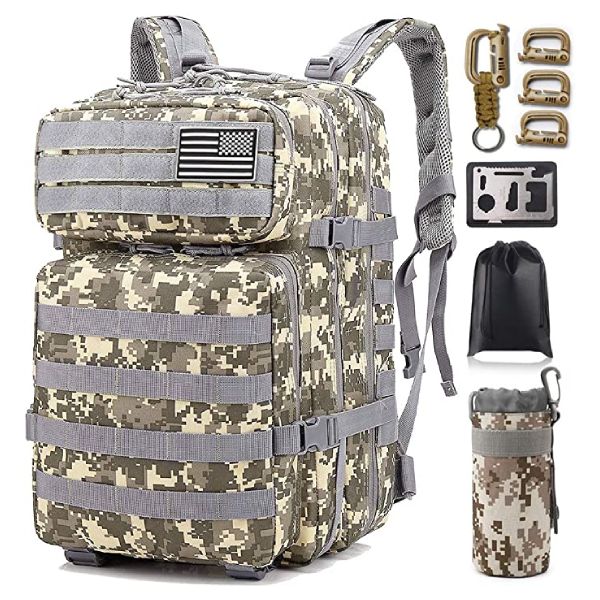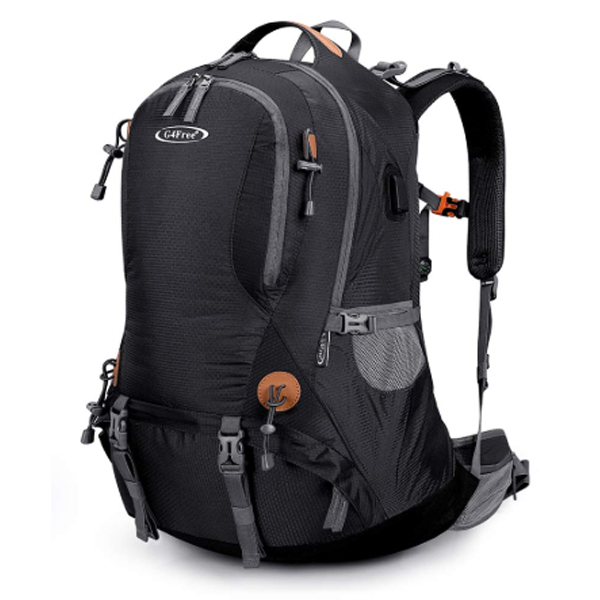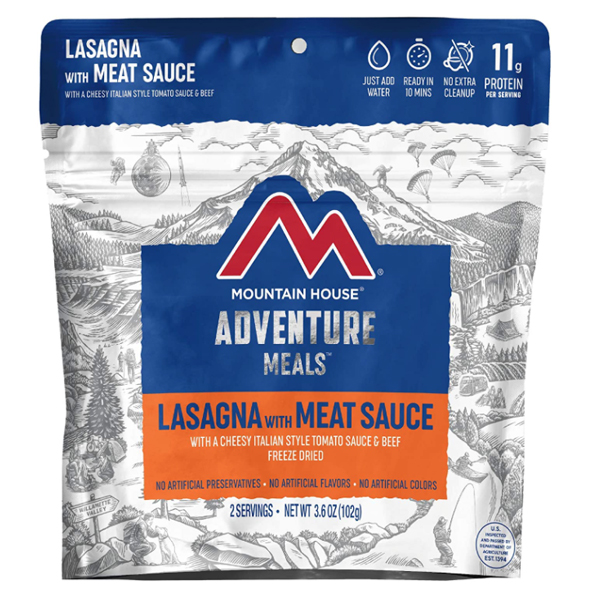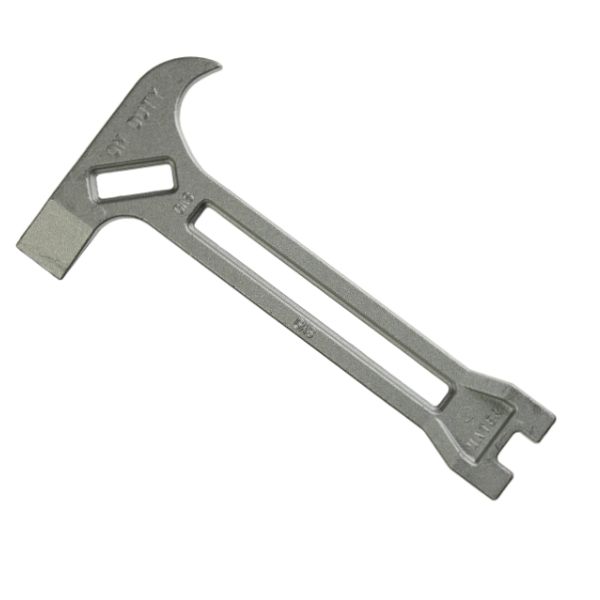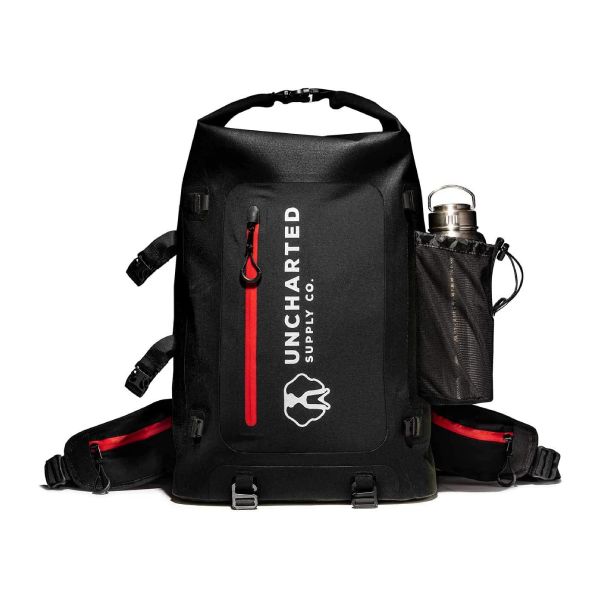Emergency Preparedness for Beginners - Includes Checklist
Welcome to Emergency Prep Gear!
We're so glad you're taking the first steps to become prepared for the challenges life brings. The more prepared we all are the less effect natural disasters, man-made events, and accidents have on our families and communities.
This article gives you step by step instructions on how to start your preparedness efforts.
If you're like most people you have emergency preparedness on the mind because of some life-altering news event, your church told you to take action, or you know someone who has scared you into action. Life can go sideways in a hurry. We better have a plan and the resources to survive the event.
All emergency prep gear costs money. Set aside a bit every month. Be disciplined and don't be tempted to rob your water, food, cash storage.
Life Experience: No Income for 10 Months
We know a family who lost their business in 2020 due to the COVID-19 pandemic. Their business was destroyed. They laid off workers, cut back everywhere they could, and sought another job. Because of the economic environment of the industry they were in, finding good work was a challenge. They went 10 months without a paycheck...but they survived just fine. How?
They had set aside emergency cash for 6 months, had 1year of food storage, had purchased a home where their monthly payment was lower than many people pay for rent.
They were ready for an emergency and survived the event.
About This Article
Content:
Scope:
Difficulty:
Table of Contents
Where Are You Vulnerable?
While it seems daunting initially, getting ready for emergencies can be straight forward. So how do you start?
Threats
Look at your household. What threats are out there that could change life? Here are some items we can think of:
- Illness
- Injury
- Natural disaster
- Storms
- Earthquakes
- Wild fires
- Man-made accident
- Industrial
- Auto
- Social unrest
- Job loss
- Terrorism
- View all Threats
Vulnerabilities
When an emergency happens, what aspects of life are vulnerable? Make a list of these vulnerabilities and prioritize them either by likelyhood or significance. Here is a list (likelyhood) we've come up with that might affect most households:
- Light - Power outages can shut out the lights in large areas
- Health - health challenges can impact your household's financial situation
- Finances - financial deficiencies can impact your ability to pay bills and put food on the table
- Food resources - financial strains, supply chain disruption, power outages or evacuation can limit your access to food
- Toiletries - supply chain disruption or runs on grocery stores can limit your access to toilet paper and other hygiene items
- Water resources - power outages, drought or evacuation can mean you have limited water resources
- Shelter - Evacuation or financial strains can change the roof over your head
- Warmth - Utility outages or evacuation can threaten your ability to stay warm
- More - What else did you add to the list?
Preparedness Plan
Now, take these vulnerabilies and make a plan to protect yourself and your household from the impact of an emergency. We recommend acquiring gear, resources, and supplies over time to last 1 year for your entire household.
Set goals to acquire items monthly or quarterly. We like the monthly appoach so you are always conscious of your progress.
Budget
Most of the gear, resources, and supplies require money. Set aside a monthly budget to use to secure the resources. Make purchases regularly and protect the items you acquire for a true emergency. Be sure to set your budget so you're living within your means - don't break the bank to acquire the supplies you need. We don't want to create an emergency trying to prevent one.

Prepare for Common Emergencies
Survival Priority List
Priortize your gear and supplies based on this list.
- Air
- First Aid/Mental Health
- Communication
- Tools
- Shelter
- Warmth
- Water
- Food
- Hygiene
- Self Protection
- Extra Clothing
- Container
Survival Priorities Explained
Emergency Prep Steps for Beginners
Ask yourself how long you'd survive with the gear and supplies you have on hand if an emergency happened tomorrow. What if you lost your job (no income), got injured, a major pandemic occurred, a massive terrorist attack happened, your home was destroyed by a storm, or zombies began to take over - how long could you and your household last? Would you have enough food for a month? How about water - do you have a week on hand? How about cash - do you have enough to pay bills for a month?
We believe we should have enough emergency supplies and gear on hand to survive for 1 year.
If we're really prepared we can survive indefinitely but for beginners, 1 year is a great goal.
Here are the recommended steps/goals to getting prepared:
1 Month
- First Aid - Buy a basic first aid kit for routine first aid events.
- Financial - Start by saving 1 month's salary in a savings account. Don't touch it unless the emergency is significant.
- Water - Buy a basic portable water filter.
- Water - Buy a 5-gallon jug (3-gallon to manage less weight) for portable water transport. Fill it.
- Financial - Save another month's salary (2 total) in your savings account. Don't touch it.
- Water - Buy a 5-gallon jug (3-gallon to manage less weight) (2 total) for portable water transport. Fill it.
- Food - Store 1 month of day to day food to your pantry for each person on the household. Focus on canned foods, beans, rice, pasta, etc.
- Toiletries - Store 1 month of toiletries. At minimum consider:
- Toilet paper (remember covid-19?)
- Toothpaste
- Soap
- Shampoo
- Deodorant
- Feminine Hygiene (some women rave about menstrual cups for preppers)
- Fuel - Buy a 5 gallon container for fuel. Fill and store it in a safe place if your residence allows.
3 Months
- Food - Store 1 month (2 total) of day to day food to your pantry for each person on the household. Focus on canned foods, beans, rice, pasta, etc.
- Toiletries - Store 1 month (2 total) of toiletries.
- Food - Store 1 month (3 total) of day to day food to your pantry for each person on the household. Focus on canned foods, beans, rice, pasta, etc.
- Toiletries - Store 1 month (3 total) of toiletries (see list in 1 Month).
- Food - Buy 1-year supply multi-vitamins for each person in the household
- Financial - Save another month's salary (3 total) in your savings account. Don't touch it.
- First Aid - Add another medium or large first aid kit.
- Fuel - Buy a 5 gallon container (2 total) for fuel. Fill and store it in a safe place if your residence allows.
- Gear - Build the emergency essentials kits.
- Gear - Buy a ready-made go-bag or buy a go-bag backpack for each person in the household. Fill it with the items from the checklist.
6 Months
- Food - Store 1 month (4 total months) of just-add-water dehydrated food pouches and/or freeze dried food pouches or cans to your pantry per person.
- Food - Store 1 month (5 total months) of just-add-water dehydrated food pouches and/or freeze dried food pouches or cans to your pantry per person.
- Food - Store 1 month (6 total months) of just-add-water dehydrated food pouches and/or freeze dried food pouches or cans to your pantry per person.
- Toiletries - Store 3 months (6 total) of toiletries (see list in 1 Month).
- Gear - Buy a bin for your house kit. Fill it with items from the checklist.
- Financial - Save another month's salary (4 total) in your savings account. Don't touch it.
1 Year
- Food - Store 1 month (7 total months) of raw/long-term food to your pantry per person. Consider:
- Beans
- Rice
- Oats
- Pasta
- Wheat (you'll need a grain mill/grinder)
- Sugar
- Salt
- Dried Milk
- Dehydrated Vegetables
- Food - Store 1 month (8 total months) of raw/long-term food to your pantry per person.
- Food - Store 1 month (9 total months) of raw/long-term food to your pantry per person.
- Toiletries - Store 3 month (9 total) of toiletries (see list in 1 Month).
- Financial - Save another month's salary (5 total) in your savings account. Don't touch it.
- Food - Store 1 month (10 total months) of raw/long-term food to your pantry per person.
- Food - Store 1 month (11 total months) of raw/long-term food to your pantry per person.
- Food - Store 1 month (12 total months) of raw/long-term food to your pantry per person.
- Toiletries - Store 3 month (12 total) of toiletries (see list in 1 Month).
- Financial - Save another month's salary (6 total) in your savings account. Don't touch it.
Recommended Products
Portable 5-Gallon Water Container
Portable, durable 5 gallon water containers for potable water transport
Buy on Amazon42L Tactical Backpack
Quality military-style backpack for bug out bags, 72-hour kits or other emergency organization
Buy on AmazonEmergency Kits
Time to Get Started
This list will get you prepared for the most common emergencies including job loss, illness, shelter at home situations, and more. From here you can continue to add gear and kits as needed so everyone in your household is safe and protected.
It's time to get started. Set aside a budget and take the first steps. You'll be surprised at how quickly you can achieve preparedness if it is a top priority.
1This post may contain affiliate links. If you make a purchase, I may earn a small commission at no additional cost to you.
2 As an Amazon Associate we earn from qualifying purchases.
3 Most reviews are based on personal experience from one of our content editors. Some are based on research and the opinions of other reviewers.









